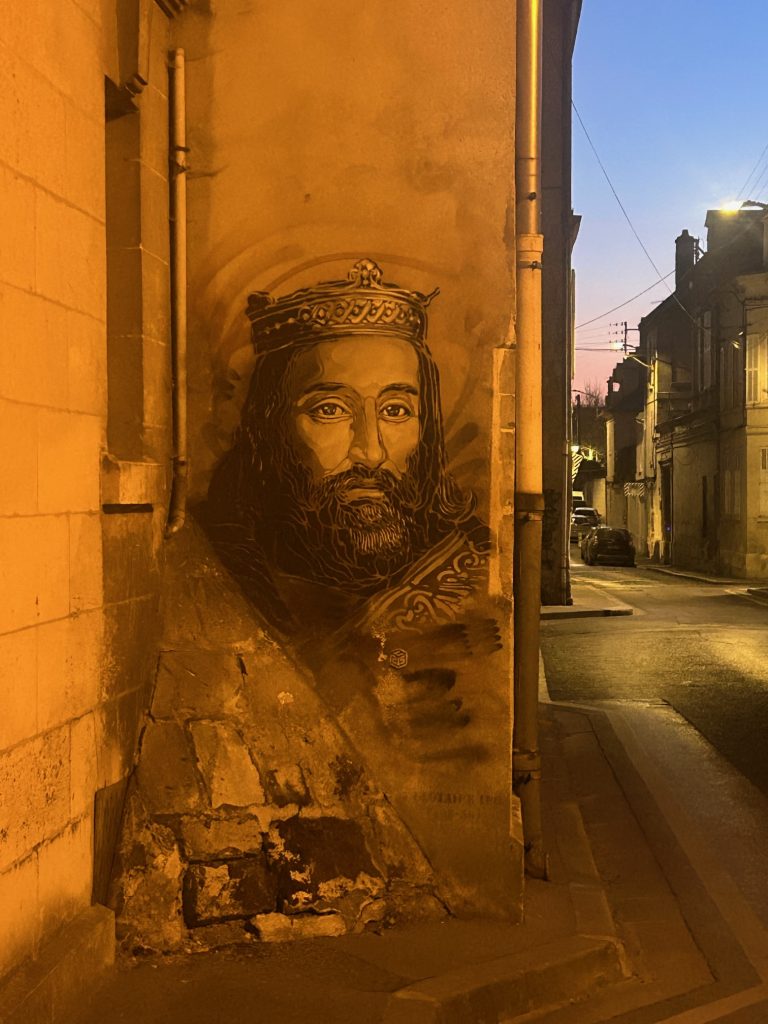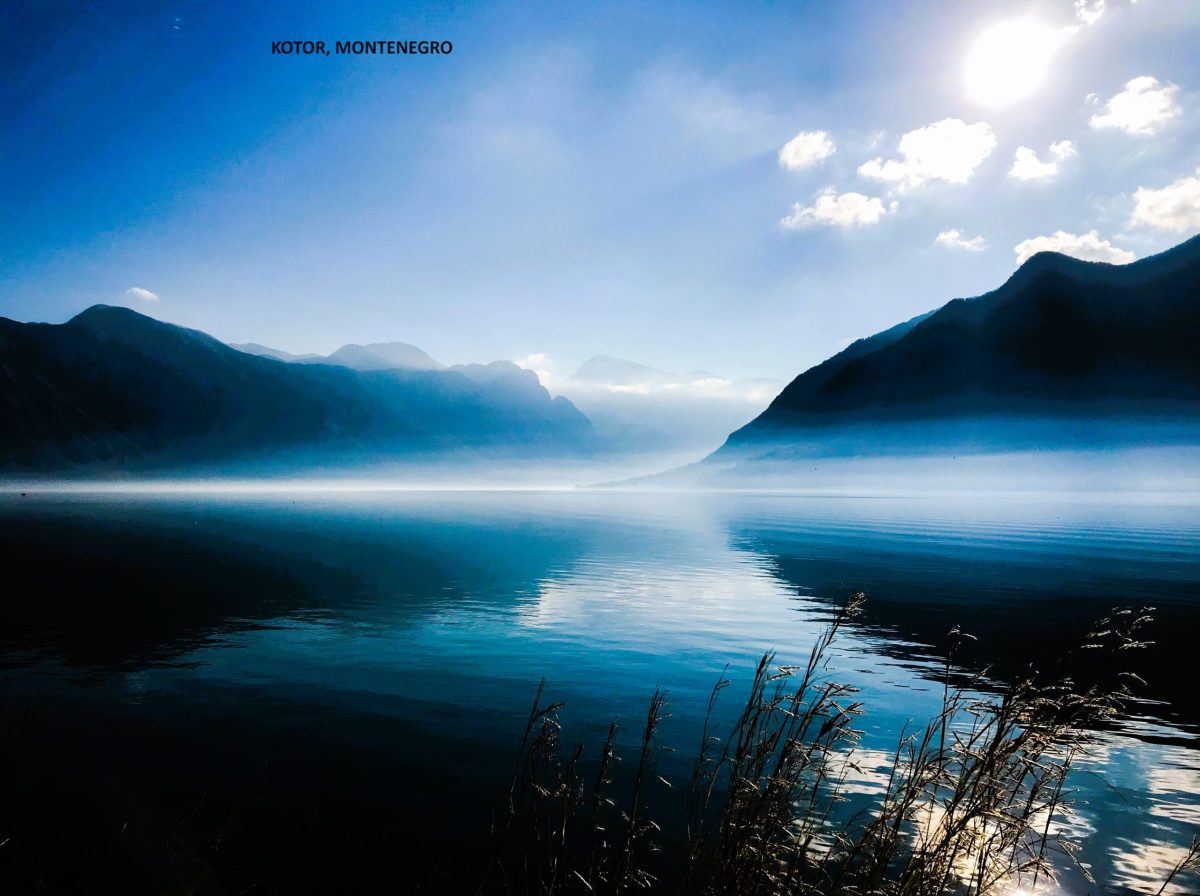We travelled little more than 60 miles today to Soissons; still in the Hauts de France Region but in the Aisne Department. This area was once part of Picardy. Soissons sits on the River Aisne and is one of the oldest towns in France. It was the scene of much fighting between various Gallic tribes and the Romans under Julius Caesar. Indeed, there’s an Asterix Theme Park just down the road from Soissons where “Asterix and Obelix (continue to) fight the dastardly Romans”.
Sadly, this part of France and Soissons in particular has witnessed a great deal of war and suffering over the ages, most especially during World War I. Soldiers from Great Britain and the Commonwealth, France and Germany were entrenched in and around the town for much of the First World War and some major battles (the three Battles of the Aisne) were fought in the immediate area. The ‘First Battle of the Aisne’ was an allied counter offensive immediately following the Battle of the Marne in 1914 which saw the start of trench warfare. The ‘Second’ in 1917 was a more bloody affair with France and Germany suffering respectively 271,000 and 163,000 casualties in just 12 days of battle. The ‘Third’ was the German ‘Spring Offensive of 1918’ (also known as the Kaiserschlacht) which was finally repulsed after some 5 weeks heavy fighting but not before the British lost 236,000 men, the French lost 92,000 and Germany lost 348,000. There are numerous French, German & British cemeteries and memorials throughout Aisne and at least two monuments in Soissons itself (the first of which is a plaque in the cathedral honouring more than one million British dead from the First World War who are buried in France and the second being the Monument des Anglais which lists the names of 3,387 British & Commonwealth soldiers killed in Soissons while repelling the German Spring Offensive and who have no known grave.
But, enough of war and on to Soissons itself. There’s enough to see in the town to keep most people happy for a day or two. I was intent on visiting most of the major sights, especially Soissons Cathedral and the Abbaye de Saint Jean des Vignes but; I’d also read about the street art of a certain Christian Guemy (aka C215) and was keen to track some of his works down.
I started in the town’s tourist office. A lovely lady provided me with a map identifying all the must see buildings in Soissons. She was unable find a map of Guemy’s street art and suggested I wait for her colleague to return but, after enduring a five minute monologue on haricot beans (it seems Soissons is famous for it’s extra large white haricot beans) I decided to leave and find the paintings without a map – a treasure hunt of sorts.
With the town’s Cathedral of Saint-Gervais & Saint-Protais backing on to Place de Fernand Marquigny, where the tourist office is located; my next port of call was always going to be Soissons Cathedral and it is well worth a visit. It dates back to the 12th century and, except for one tower being missing, it is almost an exact copy of Notre Dame Cathedral in Paris. It is possible to climb to the top of the cathedral’s tower for views over Soissons but, this once, I didn’t bother. The cathedral contains a number of quite exceptional paintings; one of which, “The Adoration of the Shepherds”, is recognised at least in part as being the work of Pierre Paul Rubens and that kept me occupied for a while…
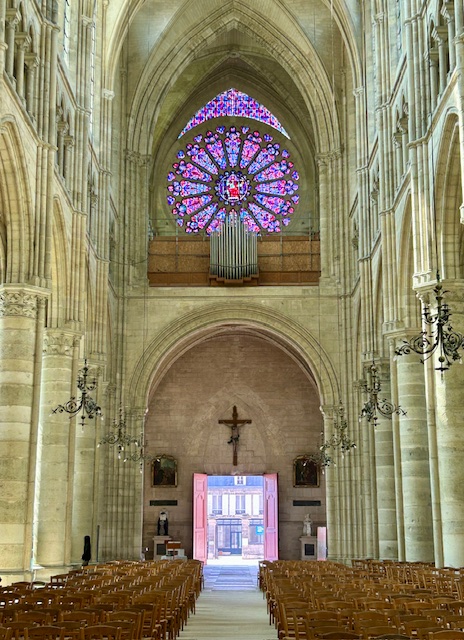
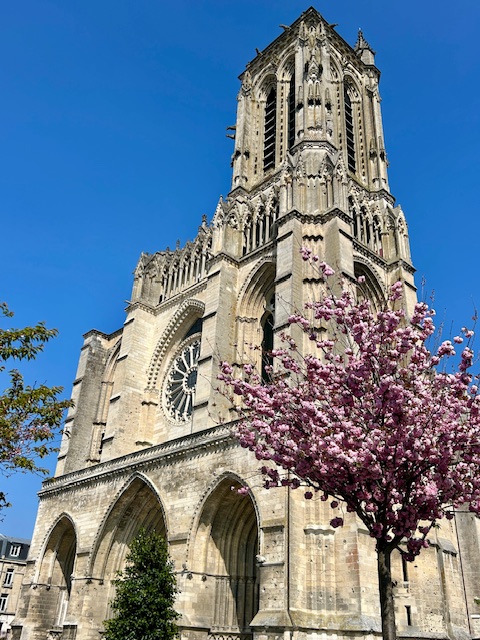
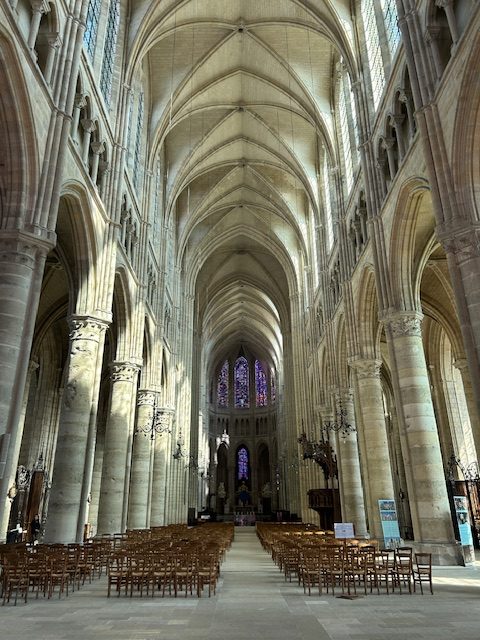
Looking every bit a cathedral itself and within easy walking distance of Soissons Cathedral (actually, almost everything within Soissons is within easy walking distance of the cathedral) are the ruins of the 11th century Abbaye de Saint-Jean des Vignes. This once magnificent abbey was ransacked by the Huguenots in 1567 and turned into a stable but it was the French Revolution which saw the abbey forever closed…
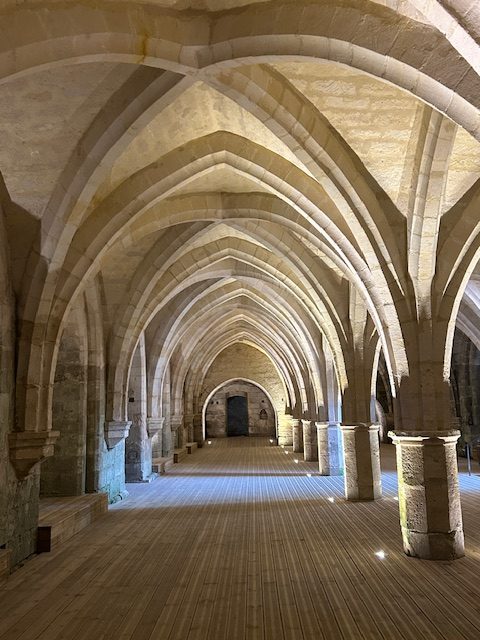
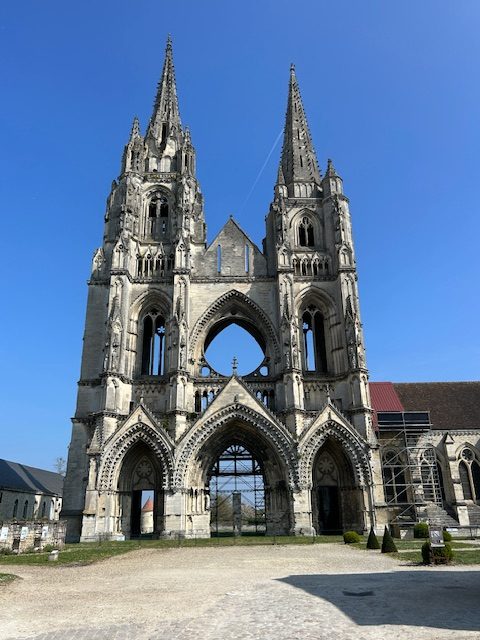
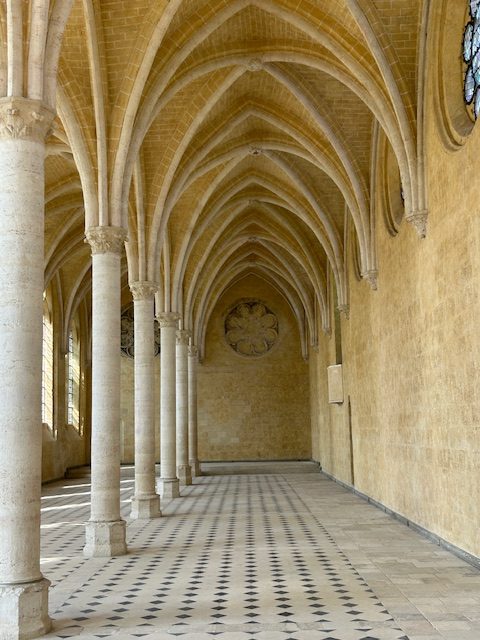
My favourite photo of the Abbey of St John of the Vines is one I took from the Place de la Republique with it’s monument to the dead of the Franco-Prussian War (the Monument aux Morts de 1870) in the foreground…
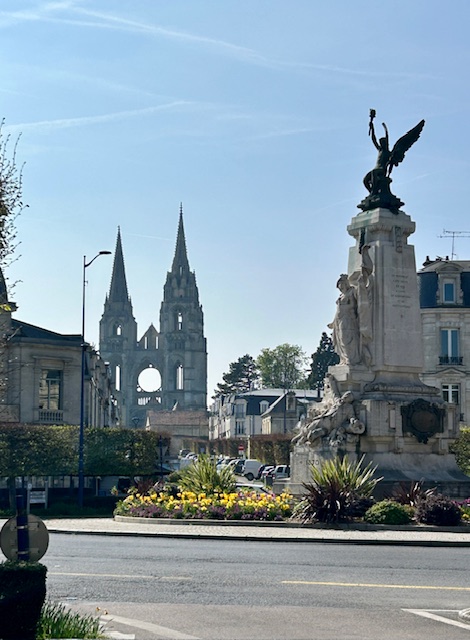
I checked out other “must see” buildings in Soissons, including L’Abbaye Saint Leger, L’Hotel de Ville, L’Eglise Saint-Pierre and the Monument des Anglais (which was closed off), but my primary interest after visiting the Cathedral and the Abbey of Saint-John was the street artwork of Christian Guemy.
Christian Guemy has been described as France’s answer to Banksy and there are examples of his work all over the world – London, Paris, Barcelona, Rome, New York, etc and even Aberdeen, Brighton and Morocco. He uses stencils and his primary interests are cats and portraits (more often than not of people that society appears to have forgotten e.g. the homeless, beggars, the aged, etc) but; in Soissons it has been directed more towards individuals with some form of connection to the town. I suspect he accepted a commission from the local council and/or tourist office.
His work is not always easy to find. Some of his creations will fill the side of a building and are easily spotted but others are small and hidden away in the most unusual places. Those I photographed below are just some of 25 he has left dotted around Soissons. I found a dozen or so.
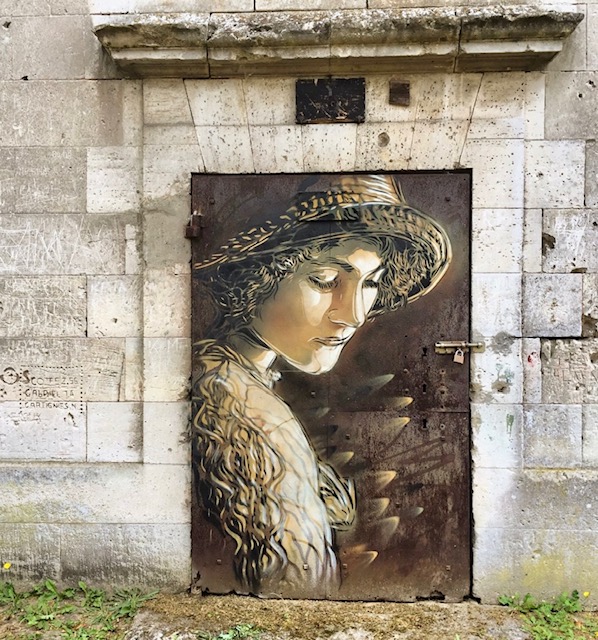

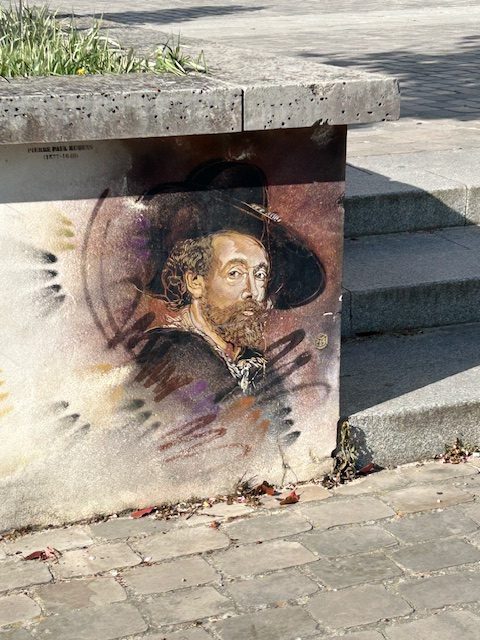
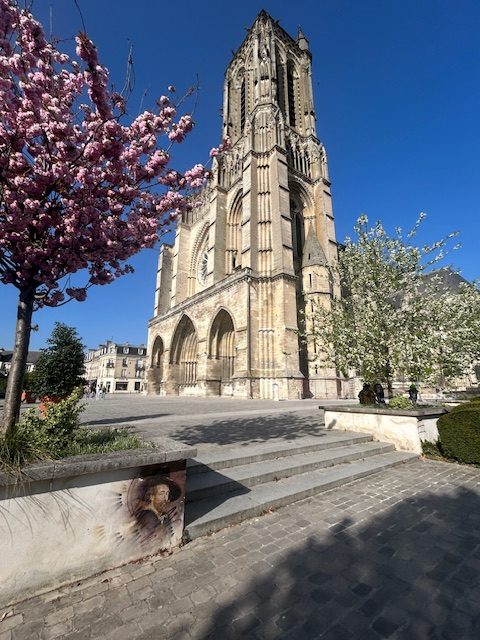
Vanya and I walked back into town during the evening to a small creperie (Le Corsaire) I had stumbled across on Rue de la Banniere. It was tiny but the welcome was warm and friendly (especially towards Nala and Beanie) and we enjoyed it immensely. I ordered the ‘Corsaire Special’ Galette as an entree and followed it with the best ever crepe for dessert (caramelised apples with cinnamon ice cream and flambeed with a dark rum). I really cannot recall what Vanya ordered probably because I’d knocked back a jug of delicious but seriously strong Bretagne Cider.
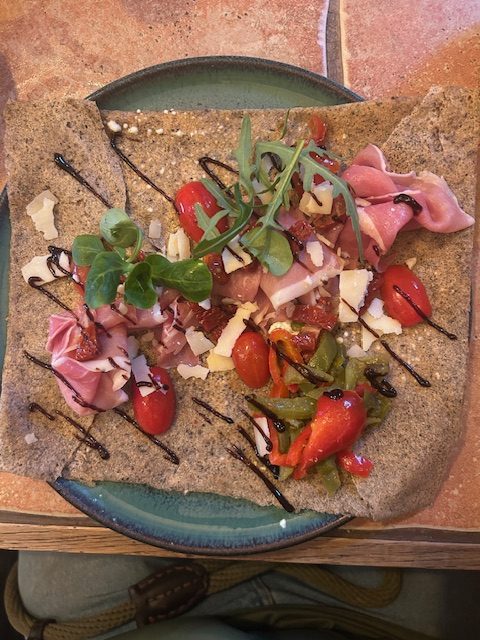
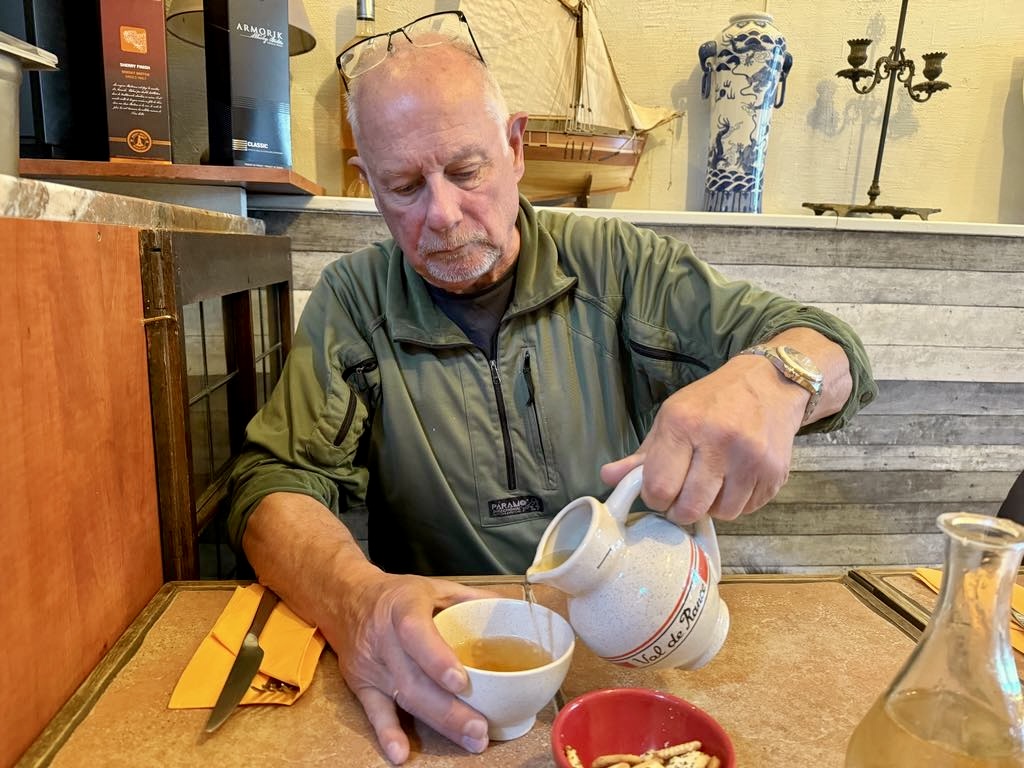
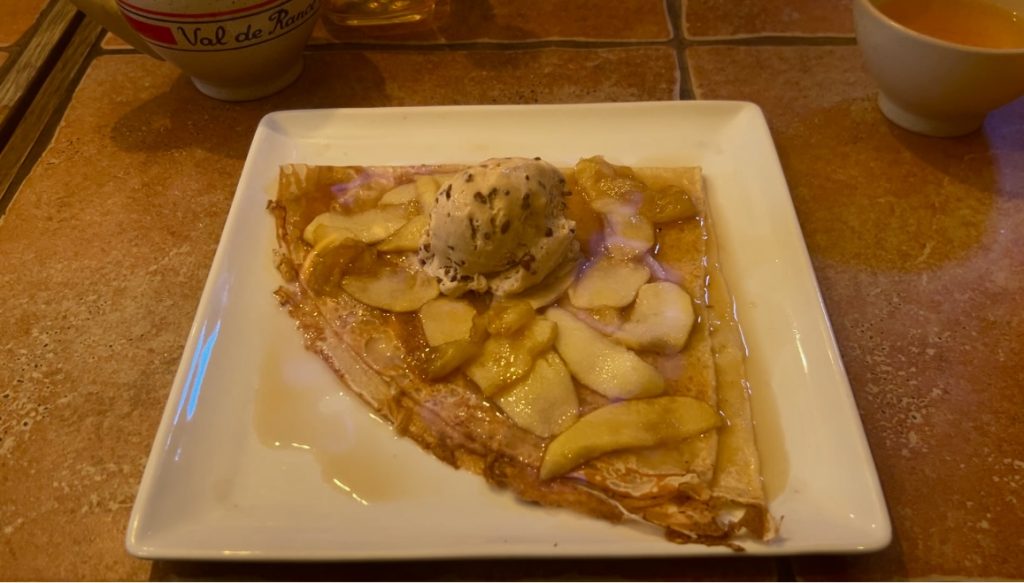
The stroll back through town to our Van took us past the cathedral and a couple more Guemy creations (Vanya was picking them out quicker than I ever did) and, hand on heart, I can say we both very much appreciated Soissons at night. Peaceful and typically French.
